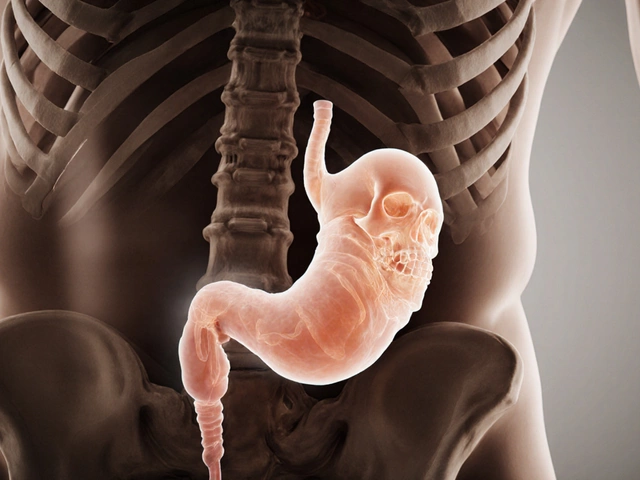Knee Surgery: What to Expect Before, During & After
If you’ve been told you need knee surgery, you probably have a lot of questions. Will you be in pain? How long will you be stuck at home? Which medicines are safe for you? Let’s break it down in plain language so you can feel more in control.
Preparing for Your Knee Operation
First thing – talk to your surgeon about the exact procedure. Most knee surgeries are either a total knee replacement, a partial replacement, or an arthroscopy to clean out damaged tissue. Knowing which one you’re getting helps you plan the right meds and rehab tools.
About two weeks before the date, start trimming down on anti‑inflammatory drugs like ibuprofen if your doctor says it’s okay. Some of these pills can interfere with blood clotting, which matters during surgery. Instead, switch to acetaminophen for pain relief, unless you have liver issues – then ask your doctor for a safe alternative.
Make a list of every prescription, supplement, and herbal remedy you take. Certain herbs (like ginkgo or high‑dose fish oil) can increase bleeding risk. Your surgeon’s team will need the full list to avoid dangerous drug interactions that could show up in blood tests.
Arrange help at home. Even a simple task like getting in and out of the bathroom can be tricky for the first few days. Ask a friend or family member to stay the first night, and set up a sturdy chair or a commode nearby.
Recovery Tips that Actually Work
Right after surgery, your knee will be swollen and stiff. Ice it for 20 minutes, three to four times a day, and keep the leg raised above heart level whenever you can. This cuts swelling and speeds up healing.
Start moving as soon as the surgeon says it’s safe – usually within the first 24 hours. Simple ankle pumps, quadriceps sets, and short walks with a walker keep blood flowing and prevent clots. You don’t need marathon sessions; a few minutes every hour is enough.When it comes to pain meds, follow the prescribed schedule. Many doctors give a short course of opioids for breakthrough pain, but they’re meant for a few days only. Combine them with acetaminophen for better relief and less risk of dependence.
Watch out for red flags: sudden intense pain, increasing swelling, fever, or drainage from the incision. These could signal infection or a blood clot and need immediate medical attention.
Physical therapy is the real game‑changer. Aim for at least three sessions a week in the first month, then taper as you regain strength. The therapist will guide you through bending, straightening, and strengthening exercises that keep the new joint working smoothly.
Nutrition also matters. Protein helps repair tissue, while calcium and vitamin D support bone health. A balanced plate with lean meat, lentils, dairy or fortified alternatives, and plenty of veggies gives your body the building blocks it needs.
Finally, be patient with yourself. Full recovery from a knee replacement can take six months, sometimes a year. Celebrate small wins – climbing a single step without crutches or walking around the block pain‑free – and keep the long‑term goal in mind.
By understanding the procedure, managing medications wisely, and following a steady rehab plan, you’ll give your knee the best chance to heal fast and stay strong.

Understanding the Duration of Total Knee Replacement Surgery
Undergoing a total knee replacement is a significant medical procedure, essential for those needing relief from chronic knee pain or disability. The duration of this surgery can vary based on various factors. Typically, the surgery takes between one to two hours, but preparation and recovery time should be factored into the overall time expectation. Understanding the details can help patients have realistic anticipations and prepare well for the process.

Returning to Work After Knee Replacement: Timeline and Tips
Understanding when you can return to work after knee replacement surgery is crucial for your recovery journey. This article explores the typical recovery timeline, the factors influencing your return to the workplace, and shares tips for easing this transition. Discover how to manage expectations and prioritize healing without compromising career progress. Stay informed to make the best decisions for your health and professional life.

Exploring the Fifth Most Common Orthopedic Surgery: Arthroscopy Insights
Orthopedic surgeries help restore function and reduce pain in bones and muscles. Among these, the fifth most common is arthroscopy, a minimally invasive procedure commonly used for joint issues. It plays a vital role in diagnosing and treating joint problems, especially in knees and shoulders. This procedure allows surgeons to address tears and damage without extensive incisions, leading to faster recovery times.

Understanding the Most Challenging Phases After Knee Replacement
Knee replacement surgery significantly improves mobility and quality of life. However, understanding the most painful period after the surgery is crucial for preparing mentally and physically. This article will delve into the initial recovery phase, factors affecting pain levels, tips to manage discomfort, and the road to long-term recovery. With the right knowledge, you can navigate the healing process more confidently.

Best Mail-Order Pharmacies: Who's Leading the Pack?
Mar, 19 2025



